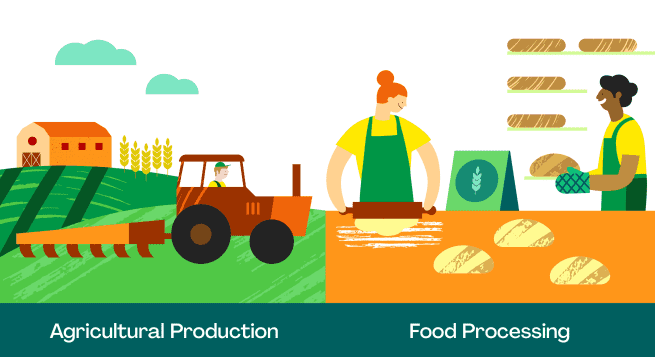Introducing Low Carbon recipes
March 3, 2023Making mealtimes even more sustainable with low CO2 meals!
Let’s eat better for tomorrow. Because each of our food choices can have an impact on the planet, it’s time to rethink the way we eat together.
Every day, we pay attention to what we eat to preserve our health. Calories intake, nutritional balance, 5 fruits and vegetables… We have many benchmarks to help us have a positive impact on our well-being. But what about the impact of our food choices on our planet?
By creating the “Low CO2” label for our recipes, HelloFresh wants to give HelloFresh customers more transparency for choosing meals that contribute to a more responsible and sustainable diet.
Why Should You Choose Low-Emission Recipes?
It’s important to HelloFresh that we provide sustainable meal options, and we’re always looking for ways to make it easier to eat sustainably.
As part of our continued focus on sustainability, we are now highlighting the Low Co2 recipes available on our weekly menu. These dishes create at least 66,7% fewer CO₂e emissions than the average CO₂e emissions of a HelloFresh recipe in 2022. Why 66,7%? We were inspired by the United Nations recommendation to halve global CO₂ emissions by 2030 to keep global warming below 1.5°C. (1)
Taking a measured approach, we wanted to set more ambitious criteria for evaluating the climate impact of your recipes, which goes beyond 50%. The Low CO2 label encourages you to make more climate-conscious meal choices that help reduce your environmental impact.
#FreshFact: HelloFresh recipes already inherently generate 25% fewer emissions [link to LCA] than the same meals made from supermarket ingredients.
(1) Source: https://www.ipcc.ch/2022/04/04/ipcc-ar6-wgiii-pressrelease/ #FreshFact: Low CO2 recipes have about 60% fewer emissions than the average HFCA recipe
Greek-Inspired Chicken Pasta – Low Co2 Meal
Why you’ll see certain types of recipes but not others
The emissions and environmental impacts of all ingredients are not created equal. A lot can influence the final emissions impact of the food that ends up on your plate, mostly from the amount of energy and resources that goes into growing, harvesting and processing the ingredients. Animal proteins, and especially red meat, require a lot of resources at the production and processing stages, which is why you won’t usually see many recipes on the HF menu with the Low CO2 tag that contain red meat. Instead you’ll tend to see a variety of delicious vegetarian, plant based, chicken, fish and seafood meals.
#Fresh Fact: To eat in line with a low carbon diet, try to limit red meats to 1-2 times per week and special occasions.
HelloFresh has partnered with HowGood to calculate the CO2e impact of ingredients based on the individual amounts of ingredients for each recipe. HowGood has the world’s largest database for product and ingredient sustainability, and draws data from hundreds of third-party scientific and peer-reviewed studies to conduct an ingredient-level CO2e impact assessment. We calculate the emissions per serving using HowGood Data sets, including Agricultural Production and Food Processing emission data, based on the precise weight of each ingredient.
Disclaimer: For a small set of ingredients, proxies were used to estimate emission factors. The proxies were determined in accordance with guidelines provided by HowGood, HelloFresh’s sustainability data provider. For some ingredients, HelloFresh, not HowGood, selected the proxies to estimate emissions and determined whether emissions met HelloFresh’s standard for “Low Carbon.” HowGood has not performed any independent investigation into whether the proxies are accurate or reliable or whether the ingredients are “Low Carbon” and is not responsible for any reliance upon HelloFresh’s “Low Carbon” designation in consumer purchasing or other decisions.
References*:
https://cdn.hellofresh.com/de/cms/Nachhaltigkeit/HowGood_research_methodology_HelloFresh.pdf
https://www.sciencedirect.com/science/article/pii/S0959378018306101?via%3Dihub